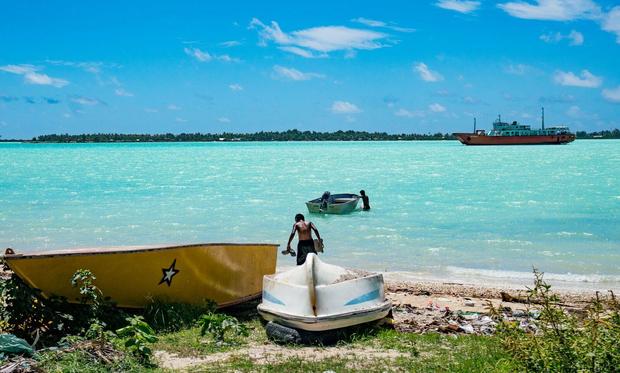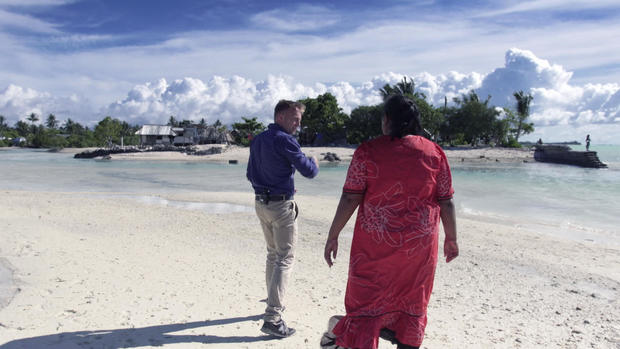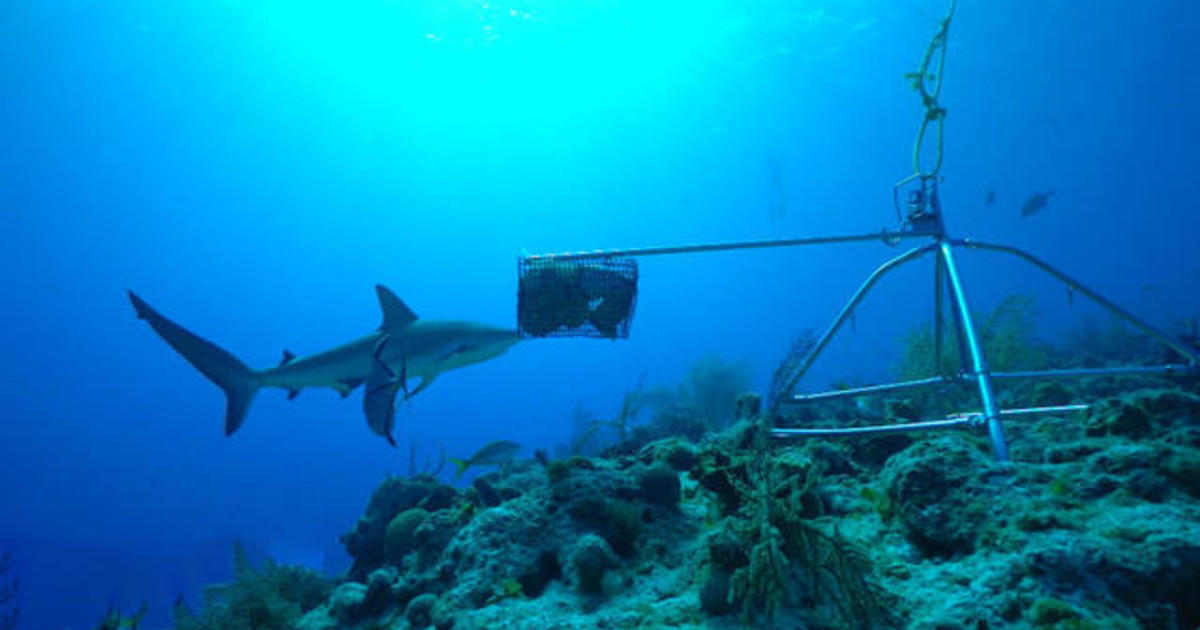Behind the Lens: Climate Refugees
Kiribati is on the frontier. On a map, this tiny island nation looks like a little speck in the middle of the South Pacific. Just over the international date line from America, it's one of the first countries in the world to see a new day and scientists say it'll be among the first to feel catastrophic effects of climate change.
When I think about our shoot in Kiribati, one of the images that sticks in my mind was bumping along a rutted, dirt coastal road on an outer-lying island. We were in the back of an open truck (one of the few large vehicles on the island) with our camera equipment while most residents were riding bicycles or little mopeds or walking. Through the palm trees and tropical plants lining the road, we'd see the most stunning vistas and glimpse lives that seemed to be trapped in time. Folks live in simple huts with thatched roofs made from palm trees. We could see families cooking on open fires or drying coconut in the sun. Fisherman would be stitching together fishing nets. Most didn't have cars, running water or what we'd consider "the basics."
- FULL REPORT: Click here to explore more about Kiribati
Their "carbon footprints" are among the lowest in the world. These are not people who travel by air or drive gas-guzzling vehicles. For many, on this remote island in Kiribati, electricity is a luxury. They're not the big carbon polluters but they're the ones who'll be among the first to have their lives disrupted by climate change through rising sea levels and extreme weather.
We met many folks who already had to leave homes as the seawater encroached and contaminated groundwater and crops or, in some cases, pulled homes into the ocean. Some told us how they've contemplated relocating. Kiribati purchased land in Fiji as a "back-up" plan in case huge numbers of people had to flee.
The water that we'd see at every turn was always changing colors. At points it was turquoise sea green, or sometimes a brilliant, deep purple. For generations in Kiribati the sea has been at the center of life, but now, that beautiful, stunning water threatens their very existence.
One man we interviewed told us that the idea of moving away from these islands was overwhelming. Here in Kiribati, he explained, nature had always provided what they needed: they could climb a tree and pick a coconut to eat or could pick up his fishing spear and catch dinner.
- See more stories from "CBSN: On Assignment"
I've visited parts of the U.S., like New Orleans, where technology (and money) allows entire neighborhoods to exist below sea level. I've traveled around The Netherlands where a significant portion of its land mass would be below water were it not for advanced engineering. But those are places with money and resources. Kiribati's development index is one of the lowest in the world and fancy engineering is -- at least now -- out of reach.
While many in Kiribati are forced to deal with the possibilities of sea level rise, extreme weather exacerbated by climate change, they were not the ones who caused it. One woman told us they were looking toward the "big" countries. They caused the problem, she said, "now when will they help?"






